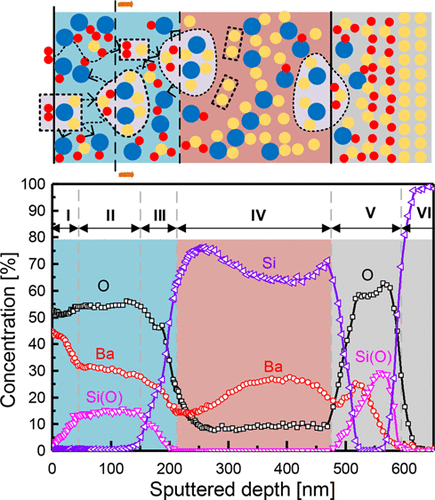

TIAN, Yilei – VISMARA, Elena – VAN DOORENE, Steve – ŠUTTA, Pavol – VANČO, Ľubomír – VESELÝ, Marián – VOGRINČIČ, Peter – ISABELLA, Olindo – ZEMAN, Miro
In ACS Applied Energy Materials. Vol. 1, iss. 7 (2018)
https://doi.org/10.1021/acsaem.8b00486
Abstract
Barium disilicide (BaSi2) has been regarded as a promising absorber material for high-efficiency thin-film solar cells. However, it has confronted issues related to material synthesis and quality control. Here, we fabricate BaSi2 thin films via an industrially applicable sputtering process and uncovered the mechanism of structure transformation. Polycrystalline BaSi2 thin films are obtained through the sputtering process followed by a postannealing treatment. The crystalline quality and phase composition of sputtered BaSi2 are characterized by Raman spectroscopy and X-ray diffraction (XRD). A higher annealing temperature can promote crystallization of BaSi2, but also causes an intensive surface oxidation and BaSi2/SiO2 interfacial diffusion. As a consequence, an inhomogeneous and layered structure of BaSi2 is revealed by Auger electron spectroscopy (AES) and transmission electron microscopy (TEM). The thick oxide layer in such an inhomogeneous structure hinders further both optical and electrical characterizations of sputtered BaSi2. The structural transformation process of sputtered BaSi2 films then is studied by the Raman depth-profiling method, and all of the above observations come to an oxidation-induced structure transformation mechanism. It interprets interfacial phenomena including surface oxidation and BaSi2/SiO2 interdiffusion, which lead to the inhomogeneous and layered structure of sputtered BaSi2. The mechanism can also be extended to epitaxial and evaporated BaSi2 films. In addition, a glimpse toward future developments in both material and device levels is presented. Such fundamental knowledge on structural transformations and complex interfacial activities is significant for further quality control and interface engineering on BaSi2 films toward high-efficiency solar cells.
